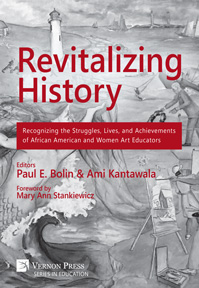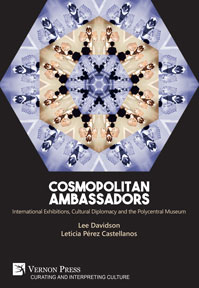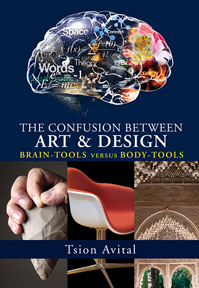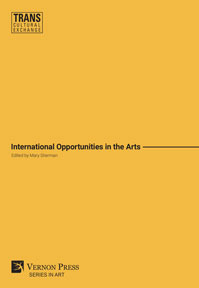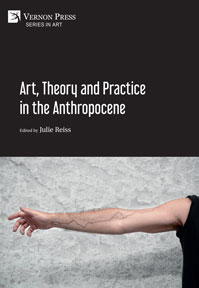Purchase this book
(click here to change currency)
This book is a great and interesting read! The author has meticulously researched the Phillipses and their collection, both within and beyond the historical context. In this manner the book celebrates the past and future too. . . . Dr. Carter-Birken brilliantly chose to focus on selected artists to provide the reader with a wide but focused range of the Phillips’ enthusiasms. Her chapters on the artists Pierre Bonnard, Arthur Dove, Georgia O’Keeffe, John Marin, Jacob Lawrence, and Mark Rothko not only give readers a great sense of the Phillips’ collection policies but are also replete with carefully crafted details and descriptions. The author’s own descriptions, interspersed with selected quotes from Duncan and Marjorie, are truly beautifully written.
Dr. Leslie Ross (Dominican University of California), journal 'Confluence', Vol. XXVIII, No. 1
Dr. Pamela Carter-Birken carries us behind the curtain of The Phillips Collection to reveal that this treasured museum is not only about the art that dons the walls but also the people who worked to make it both an experience and a home. Through her lively stories, Carter-Birken teaches us that The Phillips Collection has always been a collaborative labor of love, and grief, by an array of collectors, artists, and artist-employees. These include, but are most certainly not limited to, Duncan and his confidant, wife, and business partner, Marjorie [Acker] Phillips. The stories of the laborers who built and lived the mantra of The Phillips offer us a window to one hundred years of history, human connection, and the myriad of overlapping ways in which culture – American culture – emerges, persists, and evolves.
Dr Erika B. Seamon
Georgetown University
In her book, which coincides with the centenary of The Phillips Collection art museum, “independent scholar Pamela Carter-Birken reveals how the founders’ aims and personalities are sharpened in every room."
from 'Apollo – The International Art Magazine'
Dr. Carter-Birken is covering what might be a gap in the general landscape of books on museums and collections. The manuscript also gives the reader a bit to think about regarding Duncan Phillips’ theories about art making and viewing which is nice.
Dr Christopher Pastore
University of Pennsylvania
He was born to privilege and sought the world of art. She lived at the center of that world—a working artist encouraged by the famous artists in her extended family. Together, Duncan Phillips and Marjorie Acker Phillips founded The Phillips Collection in Washington, D.C., the first museum of modern art in America. It opened in the grand Phillips family home in 1921, eight years before New York City’s Museum of Modern Art and only a few weeks after they wed.
Duncan took the lead in developing the collection and showcasing it. Marjorie kept space and time to paint. Duncan considered Marjorie a partner in the museum even though she was not directly involved in all purchasing and presentation decisions. To him, her influence was omnipresent. Although Duncan’s writings on artists and art history were widely published, he chose not to provide much instruction for visitors to the museum. Instead, he combined signature methods of displaying art which live on at The Phillips Collection. Phillips had viewers in mind when he hung American art with European art—or art of the past with modern art, and he frequently rearranged works to stimulate fresh encounters.
With unfettered access to archival material, author Pamela Carter-Birken argues that The Phillips Collection’s relevancy comes from Duncan Phillips’s commitment to providing optimal conditions for personal exploration of art. In-depth collecting of certain artists was one of Phillips’s methods of encouraging independent thinking in viewers. Paintings by Pierre Bonnard, Arthur Dove, Georgia O’Keeffe, John Marin, Jacob Lawrence, and Mark Rothko provide testament to the power of America’s first museum of modern art.
List of Figures
Acknowledgments
Foreword by Steven A. Burr - In Dialogue with Art: The Phillips Collection as Interpretive Paradise
Notes
Introduction: Trusting the Viewer
Notes
Part One: Foundations for Personal Art Encounters
Chapter 1 The Phillips Memorial Art Gallery Opens
The 1920s: Meet, Marry, Start a Family and a Museum
Notes
Chapter 2 Supporting Many Methods of Seeing and Painting
Art Encounters for the Many
Different Parts of the World and Different Periods of Time
Return Inward
Critic as well as Collector
“Mr. Phillips is Doing a Great Deal to Awaken Interest in Art”
Hiring Artists to Work for the Museum
In-depth Collecting, Turnabout on Modernism, and Champion for Individual Thought
Notes
Chapter 3 World War II Years: Broadening Endeavors
Notes
Chapter 4 Marjorie Phillips: Artist and Executive
Privilege or Merit?
Determined to Paint
Her Greatest Cheerleader
Up from the Basement Rooms
“She Turns Tiger”
Notes
Part Two: Six Artists Through a Phillips Collection Lens
Chapter 5 Pierre Bonnard: Unsettling Calmness
Traditional Comparison of Bonnard to Matisse
Connections to Earlier Eras in Art
Romanticism without Forsaking Classicism
Spurring Independence in Viewers
A Prophet of the Modern
Notes
Chapter 6 Arthur Dove: Close to the Soil and the Stars
Reflections of Inner Consciousness
Collecting and Supporting an Interpreter of America
The Moon, the Sun, and America Singing
Notes
Chapter 7 Georgia O’Keeffe: Courage
Finding Something of Her Own
Always an Individual
Notes
Chapter 8 John Marin: A Strong and Bracing Wind
“Let the Picture Happen to You”
Setting the Stage for Conversations among Paintings
Friend and Houseguest
Engaging the Imaginations of Viewers
Notes
Chapter 9 Jacob Lawrence: Despair, Hope, Relevance
Harlem and Beyond
“Superbly Shown in Washington”
No Protection from Racism
Long-standing Relationship with The Phillips Collection
Notes
Chapter 10 Mark Rothko: A Catalyst for Introspection
Minimal Guidance Aids Personal Reflection
A Paradox
Notes
Conclusion - Return Inward: A Legacy Endures
Notes
Index
Pamela Carter-Birken is an independent scholar and journalist with an interdisciplinary doctoral degree from Georgetown University. Dr Carter-Birken writes about an array of topics, but always with a perspective on how art and literature affect the human experience. Her work has been published in several national magazines and journals, including ‘Museum’, ‘Social Work Today’, and ‘Humanities’. She has written about the Metropolitan Museum of Art and the National Gallery of Art, and her study on the funding of art exhibitions was turned into a white paper for a national committee on the arts and the humanities. Dr Carter-Birken has published on The Phillips Collection in ‘Washingtonian’ and the peer-reviewed ‘Curator: The Museum Journal’. Another peer-reviewed journal, ‘Confluence’, published her work on individual interpretation and the poetry of Lawrence Ferlinghetti. She has presented at conferences of the Association of Graduate Liberal Studies Programs and the American Alliance of Museums.
John Dewey, art as experience, anti-formalism, viewer autonomy, Modernism, Abstract-Expressionism, Post-Impressionism, Impressionism, Alfred Stieglitz, Alfred Barr, William Seitz, Peter Selz, Armory Show
Subjects
Art
Sociology
History
Series
Series on the History of Art
Related services
Download HQ coverSee also
Bibliographic Information
Book Title
Duncan and Marjorie Phillips and America’s First Museum of Modern Art
ISBN
978-1-64889-326-1
Edition
1st
Number of pages
176
Physical size
236mm x 160mm

![Duncan and Marjorie Phillips and America’s First Museum of Modern Art [Paperback, Premium Color]](/file/15528/1c72730a4473cbd80f5a9c71d716db70/1631724898.jpg)

